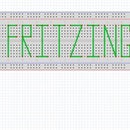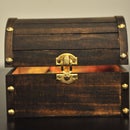Introduction: Analog Discovery Network Analyzer
Filters are a very important component to know for circuitry. A filter is used to filter out a certain range of frequencies to reduce noise or other signals coming into a system. Typical a system will have multiple filters to get a very specific frequency through. To see what frequencies a filter gets ride of we can plug them into an Analog Discovery and check using the Network Analyzer. For this demo there will be 4 different filters to show some how the filters actually work.
Step 1: High Pass and Low Pass Filters
A high pass filter will only allows high frequencies from it's cut-off frequency to infinity to pass through. A low pass filter will do the opposite of the high pass and allow frequencies lower then the cut off frequency. typically a high pass filter is made with a capacitor in series with a resistor. Those components need to be in that order. So the low pass filter needs to have a resistor in series with a capacitor. The values of the resistor and capacitor will determine where the cut off frequency is.
The cut off frequency for a high pass filter can be defined as:
1/(2*pi*R*C)
This cut off frequency will define what the lowest frequency that can pass through this filter and still be used. Any frequency below this, for the high pass, will not effect the circuit. Any frequencies above the cut off frequency, for the low pass, will not go through the system.
I made an example circuit for both the low and high pass filter. The high pass circuit uses a 1.0 nF capacitor and a 10k Ohm resistor. The low pass filter is very similar just the position of the resistor and the capacitor are flipped. I used a 1k Ohm resistor and 10 nF capacitor.
Step 2: Band Pass and Band Stop Filter
The next set of filters are also opposites of each other. A band pass filter is constructed out of two RC circuits or out of an RLC circuit. I made a band pass filter using the RLC method. I had a capacitor, and inductor and a resistor is series in that order. I had my output coming from the resistor part. For the band stop filter I had a resistor, an inductor and a capacitor in series in that order. My out put for that filter was coming off of the inductor and capacitor.
These filters are used to get a specific range of frequencies. The band pass filter will only allow the specified range to pass through the system. The band stop filter will do the opposite. The band pass filter will only allow frequencies outside of the specified range to pass through the system.
The example circuits I created for the band pass filter used 1nF capacitor, a 1 mH inductor, and a 1k Ohm resisitor. The band stop filter used a 10k ohm resistor, a 1mH inductor and a 1nF capacitor.
Step 3: Analog Discovery
Once you have all your filters built it is time to connect them to the Analog Discovery. I am using an Analog Discovery 2 for this project. I added several pins around the circuits and connected them to wear I wanted my input, outputs and grounds to be.
Take the Wavegenerator 1 lead of the AD and connect it to the input side of the circuit. Connect the Channel 2 lead to the output pin of the circuit. Finally connect one of the ground leads to the ground pin of the AD. You can also hook up the Channel 1 lead to the input pin to see the signal before it is passed through the system.
To see how a filter works it is best to use the Network Analyzer of the Waveforms 2015 program. Open up the Network Analyzer to get started. Select the Network tab to get the Network Analyzer open. Once your circuit is hooked up you can select run and see what your waveform does. You may have to change the frequency range you wish you see along with how many Decibels are viewed at a time to see what is happening to your signal as it goes through the system.
I kept my freq range at 500 Hz to 2 MHz and then my Decibel range at 50 Db and the top being 10 Db.
If you look at the signals you can see that what each filter is doing what it should be doing. In the high pass filter the wave form is plateauing at the cut-off frequency of the system. In the low pass filter the waveform is dropping off just after the cut-off frequency. The band pass filter is allowing only a single frequency to pass through as seen by the rise and fall of the waveform at the exact point. The band stop filter is not allowing a certain frequency though as seen by the converging at the exact point in the waveform.
Step 4: In Conclusion
Filters are a very handy tool to use when designing a system. They are extremely helpful for reducing noise or only allowing a certain frequency through. I hope these simple circuits will give you some insight into how to design your own filters and help you with your projects. If you have any questions feel free to ask or give me shout. I'd love to hear what people have used their filters for also! Anyway, thanks for reading. until next time.













